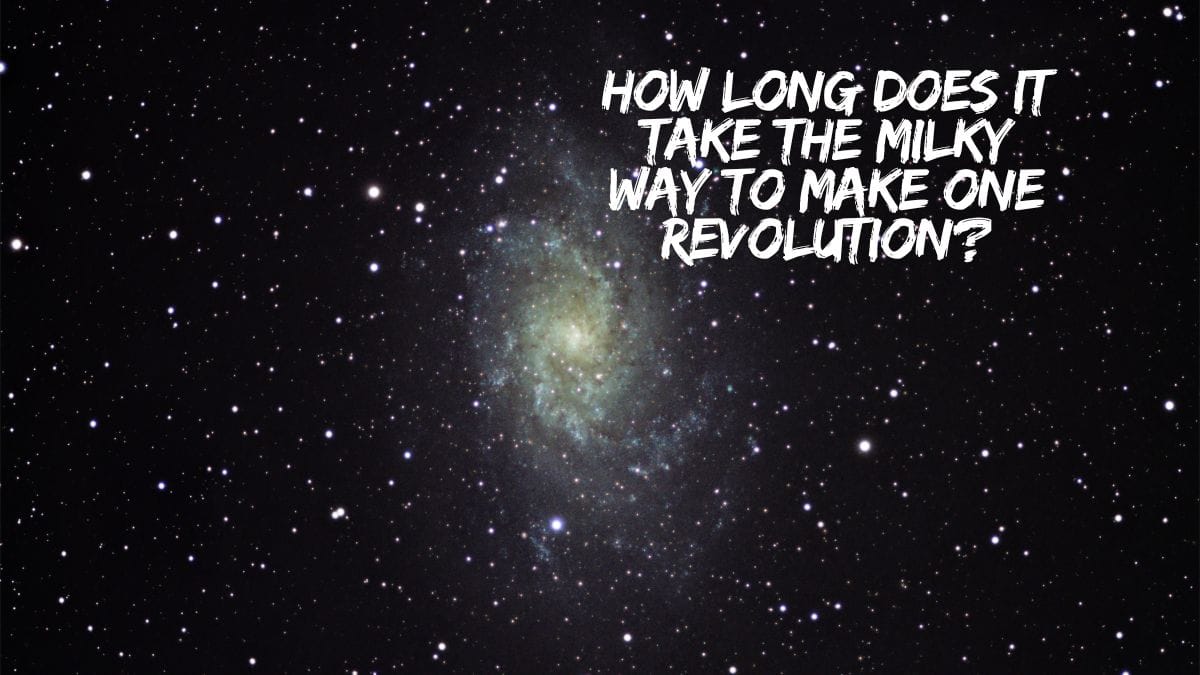The Milky Way is our home galaxy, a giant spinning disk of stars, gas, and dust. Just like Earth spins on its axis and orbits the Sun, our galaxy also rotates in space. But have you ever wondered how long it takes for the Milky Way to complete one full spin?
Galaxies don’t move like a solid wheel—different parts rotate at different speeds. Our solar system sits about halfway from the center of the Milky Way, and from here, the galaxy’s rotation affects everything inside it. So, how much time does one full rotation take? The answer might surprise you!
How Does the Milky Way Rotate?
The Milky Way doesn’t spin like a ball or a frisbee. Instead, it rotates like a giant whirlpool. Stars, planets, and gas clouds all move in circular paths around the galaxy’s center.
- The inner parts (closer to the center) rotate faster.
- The outer parts (like where our Sun is) move slower.
- The entire galaxy takes a very long time to complete one full turn.
This kind of rotation is called differential rotation, meaning different parts spin at different speeds.
How Long Does One Full Rotation Take?
For our solar system, it takes about 230 million years to complete one trip around the Milky Way’s center. This means the last time Earth was in this same position in the galaxy, dinosaurs were just starting to appear!
- The Milky Way is about 100,000 light-years wide.
- Our Sun moves at roughly 514,000 miles per hour (828,000 km/h) around the center.
- Even at this speed, one full rotation takes an incredibly long time.
Imagine if a single galactic year (one rotation) was like an Earth year. Humans have only been around for a tiny fraction of that time!
How Do Scientists Measure the Milky Way’s Rotation?
Astronomers use special tools and methods to study our galaxy’s movement:
- Tracking Stars – Scientists observe how stars move over time to calculate speed.
- Radio Telescopes – These help map gas clouds and measure their motion.
- Math & Physics – By using gravity and motion laws, they estimate rotation speed.
Since we can’t see the Milky Way from the outside, these methods help us understand its structure and movement.
Will the Milky Way’s Rotation Ever Stop?
Galaxies rotate because of gravity and the way they formed billions of years ago. Over time, the Milky Way’s spin might slow down, but it won’t stop completely.
- Galaxies collide – The Milky Way will merge with the Andromeda Galaxy in about 4.5 billion years, changing its rotation.
- Dark matter – An invisible force helps keep galaxies spinning by adding extra gravity.
So, the Milky Way will keep turning for a very, very long time!
What Happens If the Milky Way Stops Rotating?
If the Milky Way somehow stopped spinning:
- Stars and planets would drift away or fall toward the center.
- The galaxy’s shape would change dramatically.
- New star formation might stop because gas clouds wouldn’t move.
Luckily, this won’t happen anytime soon!
Conclusion
The Milky Way takes about 230 million years to complete one full rotation. That means since the dinosaurs roamed Earth, our solar system has only gone around the galaxy once! The galaxy’s spin keeps everything inside it moving in a giant cosmic dance.
Next time you look at the night sky, remember—you’re on a planet that’s orbiting a star, which is also moving around a supermassive black hole at the center of a spinning galaxy. Isn’t space amazing?
📌 Frequently Asked Questions
How fast does the Milky Way galaxy rotate?
The Milky Way rotates at about 514,000 miles per hour (828,000 km/h) at our Sun’s position. The inner parts spin faster, while the outer parts move slower.
How many times has the Sun orbited the Milky Way?
The Sun is about 4.6 billion years old and takes 230 million years per orbit. So, it has completed about 20 full trips around the galaxy.
What is at the center of the Milky Way?
A supermassive black hole called Sagittarius A* sits at the center. It has a mass of over 4 million Suns!
Will the Milky Way’s rotation speed change?
Yes, over billions of years, collisions with other galaxies (like Andromeda) will change its speed and shape.
How old is the Milky Way galaxy?
The Milky Way is about 13.6 billion years old, almost as old as the universe itself!
Can we see the Milky Way rotating?
No, because we’re inside it, and the rotation is too slow for us to notice in a human lifetime.
What keeps the Milky Way spinning?
Gravity and dark matter hold the galaxy together and keep it rotating. Without them, stars would fly apart.
How does the Milky Way compare to other galaxies in rotation speed?
Some galaxies spin faster, while others are slower. The Milky Way’s speed is average for a spiral galaxy of its size.
Will Earth’s position in the Milky Way change?
Yes, but very slowly. In millions of years, our solar system will move to a different part of the galaxy as it rotates.
Does the Milky Way rotate clockwise or counterclockwise?
The Milky Way rotates counterclockwise when viewed from the “top” (north of the galactic plane). From our position inside the galaxy, we see stars and gas moving in a circular motion around the center, but since we’re part of the rotation, it’s hard to perceive the direction directly. However, observations confirm the galaxy spins counterclockwise from an outside perspective.

You Might Also Like
How Do Black Holes ‘Sing’?
2025’s Scariest Black Hole: It’s Growing Too Fast?
What is the biggest black hole in the Andromeda Galaxy?
Why Is Polaris So Important for Navigation?